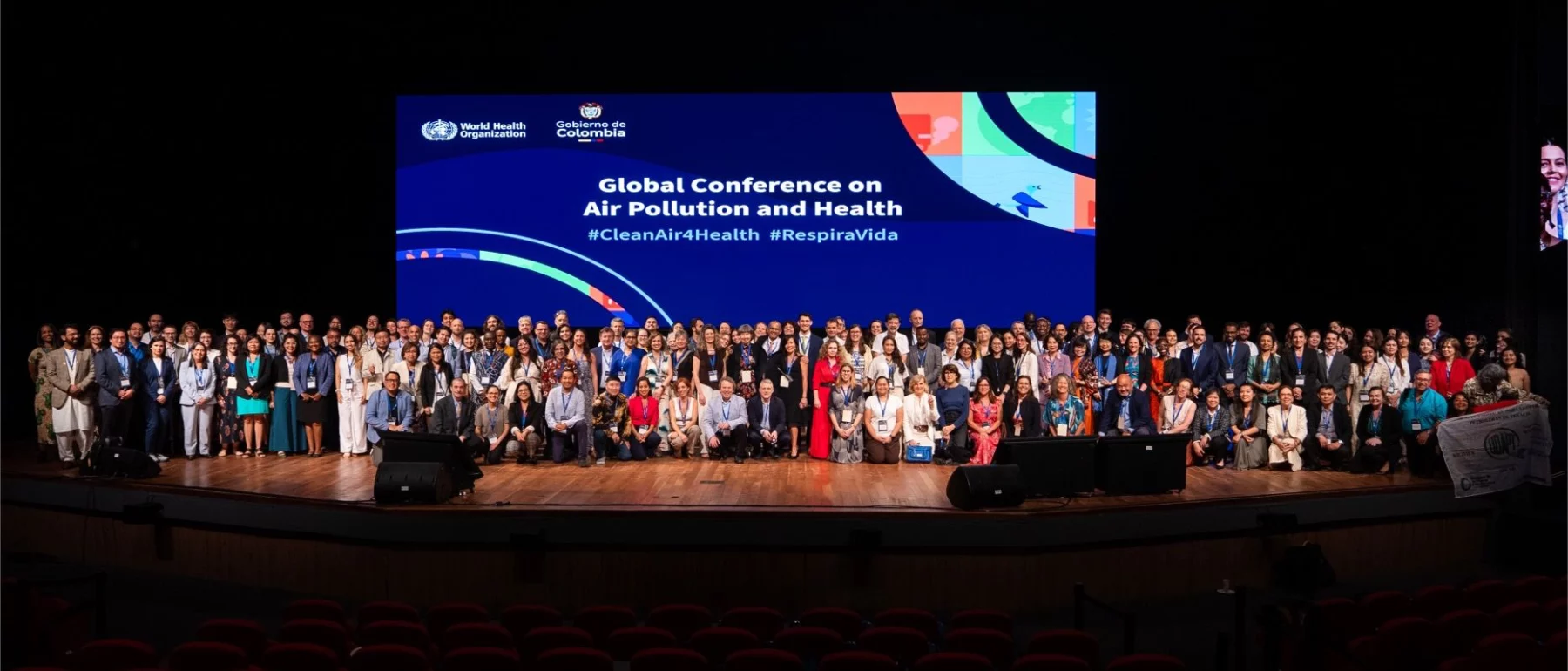When we think of clean air, we often picture blue skies and sunny days. But clean air is more than just a pleasant image – it’s essential for a healthy society and a sustainable future. The evidence is clear: air pollution causes seven million deaths annually worldwide, with the global cost of related health damage reaching USD 8.1 trillion in 2019. It is the second leading risk factor for deaths globally.
Although one in nine people breathe polluted air, the burden is not equally shared. Air pollution is also an equity issue. Polluted areas are often found in low-income communities where access to preventive and quality healthcare is limited. Many residents also lack clean cooking alternatives, leaving them exposed to harmful indoor air pollution. Urgent action is needed as we shift from planning to implementation; the voices of experts and civil society must be heard.
The second Global Conference on Air Pollution and Health, hosted by the WHO and the Government of Colombia in Cartagena, brought together diverse stakeholders to address one of the greatest environmental and health challenges of our time: air pollution. The setting was ideal for country representatives, scientists, health professionals, advocates, philanthropies and civil society groups to discuss and forge clean air commitments. The conference resulted in nearly 50 countries, cities and organizations pledging to reduce the health impacts of air pollution by 50% by 2040. In addition, nearly 50 million organizations signed the health community’s global call to action demanding urgent measures to cut air pollution and protect public health.
Nearly 50 countries, cities and organizations committed to halving air pollution by 2040 at the WHO conference in Cartagena. This agreement highlights the urgency of addressing air pollution, which causes seven million deaths annually. SEI’s Jennifer Pedraza offers insight into how these commitments can stay on track.
How can we address air pollution and promote clean air?
The three-day conference featured a range of panels and sessions covering scientific evidence, healthcare perspectives, national experiences, sectoral initiatives and advocacy stories aimed at highlighting and mobilizing policy solutions and resources. These discussions produced several key recommendations:
1. Shared challenges require shared action
Climate change is inherently linked to air pollution, making clean air not just an environmental issue but a human right. As Maria Neira, WHO Director for Environment, Climate Change and Health, stated in her closing remarks, “Clean air is not a privilege; it is a human right as recognized by the UN General Assembly”.
Recognizing that the main sources of air pollution – fossil fuels and industrial activities – are also major contributors to CO2 emissions, climate policy offers a powerful opportunity to reduce air pollutants and avoid duplicating efforts simultaneously. The upcoming round of Nationally Determined Contributions (NDCs) is the perfect opportunity to integrate air quality actions and set specific targets for pollutants like black carbon.
2. Increase public awareness and collaboration
Public awareness must be grounded in coordinated intersectoral partnerships. These should include not only ministries of environment and health but also energy, transport and finance, along with subnational authorities and city councils. Collaborating on evidence-based strategies can improve air quality and reduce health impacts.
Just as crucial is engaging citizens. People-centred solutions that harmonize economic development with social inclusion and environmental protection are essential for successful policy implementation.
3. Invest in clean air solutions
Yes, achieving clean air requires investment – but the cost of inaction is far greater. Ambient air pollution is estimated to cost 4–5% of global GDP annually. These funds could be redirected to accelerate clean energy transitions, expand sustainable transport and build resilient communities.
As a key outcome of the conference, the Clean Air Fund committed USD 90 million in new funding to support initiatives at the intersection of climate and health.
4. Strengthen the capacity of the health sector
In 2024, Member States of the Pan American Health Organization (PAHO) adopted a policy addressing health, climate change, and equity. The policy aims to strengthen the health sector’s capacity to respond to climate-related challenges, especially for vulnerable populations. This initiative can serve as a valuable model that can be seamlessly extended to tackle air pollution.
Efforts should focus on clearly communicating health risks using the best available evidence, equipping healthcare professionals with essential tools and resources, and integrating air pollution and environmental risks into medical education. The health system must also advocate for clean air as part of its core mission.
As the conference concluded, one message stood out: commitment is the cornerstone of clean air. The collective pledges made, as Dr. Neira noted, mark a crucial step toward addressing air pollution’s public health crisis. The true measure of success, however, will be the lives saved and the improved wellbeing of communities worldwide – achievements that demand sustained, focused effort.


